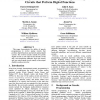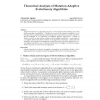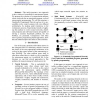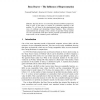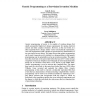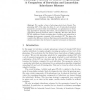97
Voted
GECCO
1999
Springer
15 years 4 months ago
1999
Springer
This paper demonstrates the ability of genetic programming to evolve analog circuits that perform digital functions and mixed analog-digital circuits. The evolved circuits include...
50
Voted
GECCO
1999
Springer
15 years 4 months ago
1999
Springer
GECCO
1999
Springer
15 years 4 months ago
1999
Springer
GECCO
1999
Springer
15 years 4 months ago
1999
Springer
In this work MagnetoEncephaloGram (MEG) recordings of epileptic patients were analyzed using a hybrid neural networks training algorithm. This algorithm combines genetic algorithm...
EUROGP
1999
Springer
15 years 4 months ago
1999
Springer
The paper presents the abstraction transformation which is a fundaethod for creating functions in ADATE. The use of abstraction turns out to be similar to evolution by gene duplic...
119
Voted
EUROGP
1999
Springer
15 years 4 months ago
1999
Springer
– This article presents a new approach to the evolution of controllers for autonomous agents. We propose the evolution of a connectionist structure where each node has an associa...
EUROGP
1999
Springer
15 years 4 months ago
1999
Springer
The Busy Beaver is an interesting theoretical problem proposed by Rado in 1962. In this paper we propose an evolutionary approach to this problem. We will focus on the representati...
EUROGP
1999
Springer
15 years 4 months ago
1999
Springer
Genetic programming is known to be capable of creating designs that satisfy prespecified high-level design requirements for analog electrical circuits and other complex structures...
100
click to vote
EUROGP
1999
Springer
15 years 4 months ago
1999
Springer
In this paper we describe how the Stepwise Adaptation of Weights (saw) technique can be applied in genetic programming. The saw-ing mechanism has been originally developed for and ...
EUROGP
1999
Springer
15 years 4 months ago
1999
Springer
Abstract We consider a form of phenotype plasticity in Genetic Programming (GP). This takes the form of a set of real-valued numerical parameters associated with each individual, a...
